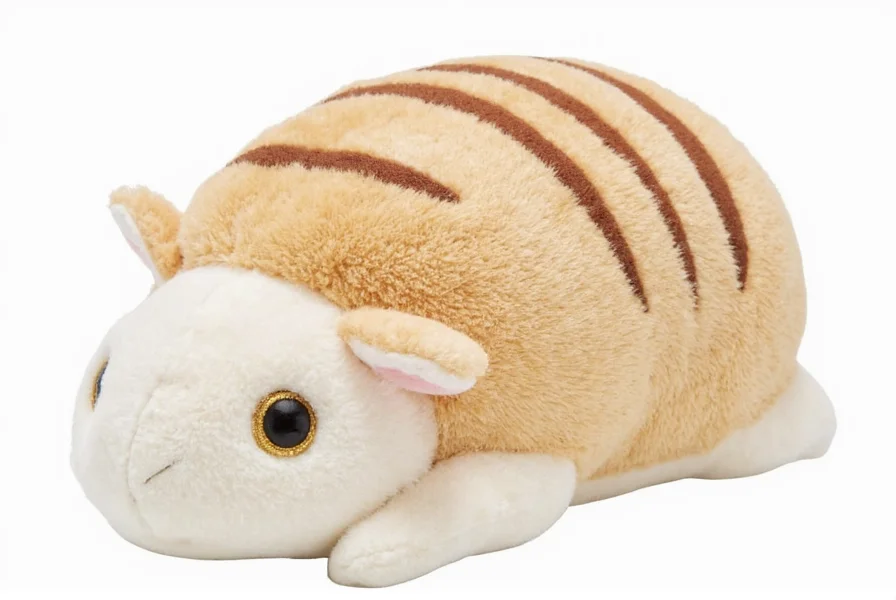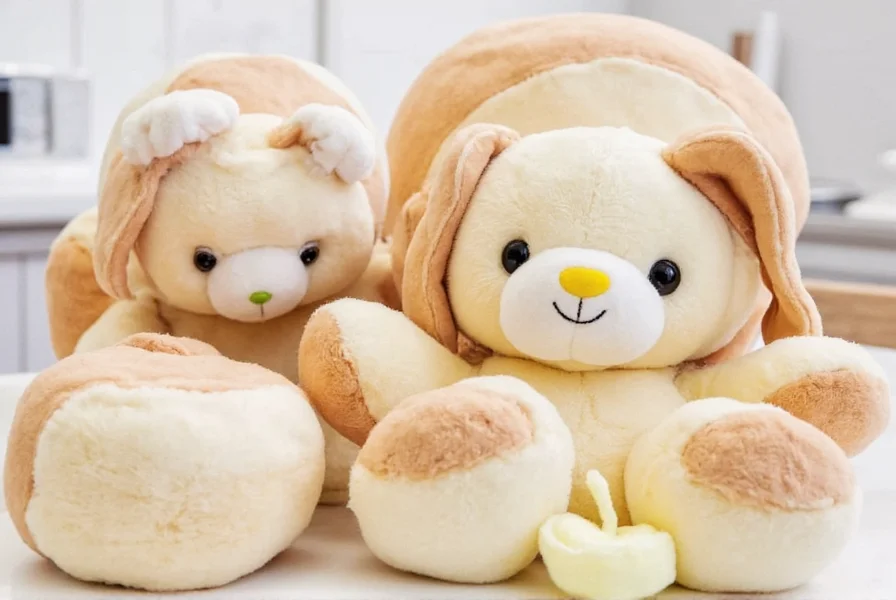A cinnamon roll plushie brings the cozy appeal of everyone's favorite pastry into a huggable, durable toy format. Unlike generic stuffed animals, these specialized plushies capture the distinctive swirl pattern of a real cinnamon roll through careful fabric selection and stitching techniques. The most authentic versions feature multiple layers of fabric to create dimension, with "icing" details often made from soft, textured materials like minky or sherpa.
What Defines a Quality Cinnamon Roll Plushie
Not all cinnamon roll plush toys deliver the same experience. High-quality versions demonstrate attention to detail that elevates them from simple stuffed toys to collectible items. The best cinnamon roll plushies incorporate several key elements that food-themed plush enthusiasts recognize as markers of superior craftsmanship.
| Feature | Standard Plushie | Premium Plushie |
|---|---|---|
| Spiral Detailing | Printed pattern | 3D stitched layers |
| Icing Texture | Flat fabric | Raised, textured material |
| Filling | Basic polyester | Memory foam blend |
| Durability | 6-12 months | 3+ years |
Materials That Make the Difference
The magic of a realistic cinnamon roll plushie lies in its material composition. Top-tier versions use a combination of fabrics to create visual and tactile authenticity:
- Brown swirl fabric: High-quality cinnamon roll plush toys use multiple shades of brown and tan fleece or minky fabric to create depth in the "cinnamon" layers
- Icing texture: The best plushies feature raised "icing" made from textured fabrics like sherpa or chenille for realistic dimension
- Filling composition: Premium options incorporate memory foam blends with polyester fiberfill for optimal huggability and shape retention
- Construction: Double-stitched seams prevent unraveling, especially important at the spiral center where stress occurs
Safety Considerations for All Ages
When selecting a cinnamon roll plushie, especially for children, safety should be a primary consideration. Reputable manufacturers follow strict safety protocols that go beyond basic requirements.
Look for plushies with embroidered facial features rather than plastic safety eyes, particularly for children under age 3. The safest cinnamon roll plush toys use non-toxic dyes and meet international safety standards including ASTM F963 (United States), EN71 (Europe), and AS/NZS ISO 8124 (Australia/New Zealand). For households with allergies, hypoallergenic filling options provide peace of mind while maintaining the plushie's comforting qualities.
Care Instructions for Longevity
Proper care extends the life of your cinnamon roll plushie significantly. Unlike regular stuffed animals, the detailed construction of food-themed plushies requires specific maintenance approaches.
Hand washing with mild detergent preserves the intricate details better than machine washing. For spot cleaning, use a soft cloth with diluted soap solution, focusing on the "icing" areas which collect the most dirt. Air drying away from direct sunlight prevents color fading in the brown and tan fabric layers. When storing, place your cinnamon roll plushie in a breathable cotton bag with cedar chips to deter pests without harsh chemicals.

Why Cinnamon Roll Plushies Make Exceptional Gifts
Cinnamon roll plush toys have become increasingly popular as thoughtful gifts for several compelling reasons. Their universal appeal bridges age gaps, making them suitable for children, teens, and adults alike. The food-themed nature taps into comfort associations while avoiding gender-specific design elements.
For baking enthusiasts and pastry lovers, a cinnamon roll plushie represents a whimsical extension of their interests. Mental health professionals sometimes recommend food-themed plushies like cinnamon rolls for anxiety relief due to their comforting, familiar shapes. The compact size of most cinnamon roll plushies (typically 8-12 inches) makes them ideal for desks, car seats, or bedtime companions without taking up excessive space.
DIY Options for Crafters
Creating your own cinnamon roll plushie allows for complete customization of size, texture, and details. Beginner-friendly patterns require only basic sewing skills and accessible materials. The process involves cutting spiral-shaped fabric pieces, assembling them in layered fashion, and adding textured "icing" details.
For those without sewing experience, no-sew alternatives using fabric glue and pre-cut materials provide satisfying results. Adding cinnamon-scented beads inside the plushie creates an aromatherapy element that enhances the realistic experience. Many crafters enjoy personalizing their homemade cinnamon roll plush toys with unique fabric choices or additional decorative elements like fabric "cinnamon sticks".











 浙公网安备
33010002000092号
浙公网安备
33010002000092号 浙B2-20120091-4
浙B2-20120091-4